By Rick VanSickle
It’s not that unusual to see groups of Niagara winemakers tasting the best wines from Bordeaux, Burgundy, Champagne, and Germany beside their own. It’s part of the job.
Note, also in this Niagara Wine Report: Three Niagara (and one Chianti) wine recommendations from the Vintages release this Saturday, including Foreign Affair sparkling, Bachelder Village Chardonnay, Tragically Hip reserve red, and a smartly priced Chianti Riserva from Uggiano Roccialta, plus two new bubbles from Southbrook and Henry of Pelham.
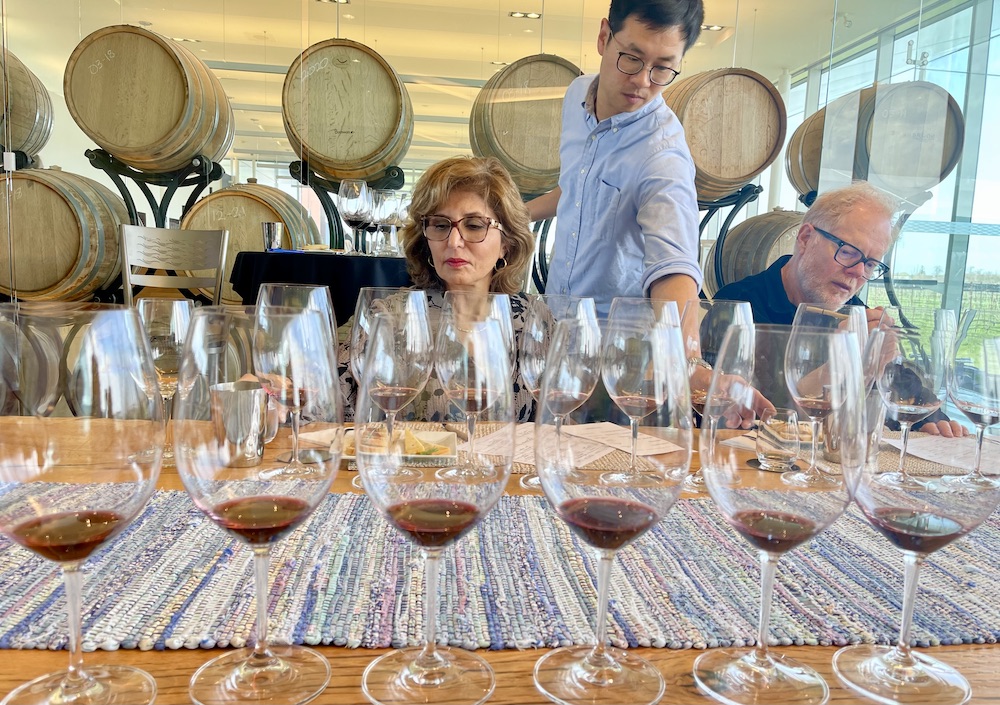
But to take your top Niagara wines, taste them semi blind against the world’s best, and invite consumers to participate, now that takes guts. Southbrook Vineyards proprietor Bill Redelmeier did exactly that recently, calling it, tongue firmly in cheek, the “Judgment of Niagara” after the now famous Judgment of Paris tasting in 1976.
The Paris wine competition featured the world’s best Chardonnays from around the world, and Cabernet Sauvignon from Napa Valley matched up with Bordeaux in a blind tasting judged by top international critics. Stag’s Leap Wine Cellars Chardonnay and Chateau Montelena Cabernet Sauvignon, both from Napa, shocked the wine world after being chosen the top white and red wine, respectively, in the showdown.
Taking a page from that historic tasting, Redelmeier organized two sittings, the first pitting four 2020 Bordeaux reds from the Right Bank of the Gironde from Saint-Émilion, Pomerol and Fronsac against Southbrook’s flagship red, the 2020 Poetica, which is a Bordeaux blend dominated by Cabernet Sauvignon, and the 2020 Estate Merlot. The wines from the Right Bank are predominantly Merlot and Cabernet Franc with less Cabernet Sauvignon.
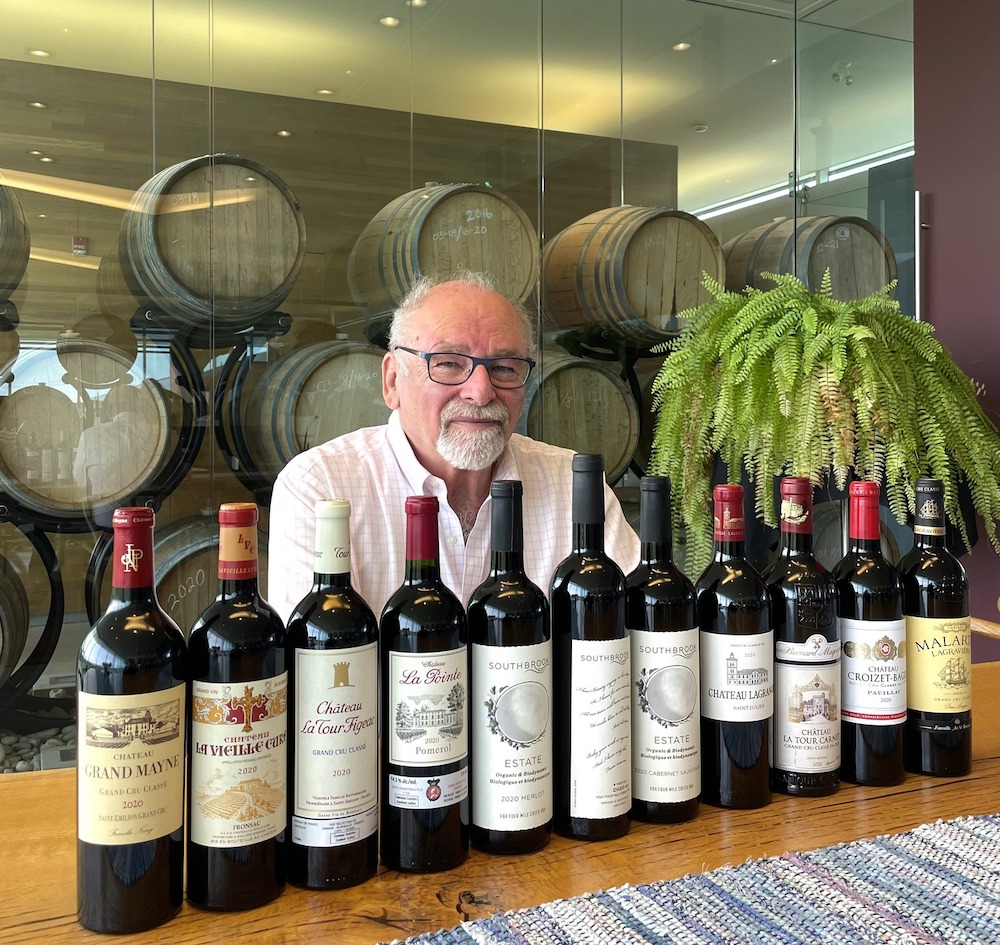
For the next tasting, it was Bordeaux from the Cabernet Sauvignon dominant Left Bank in the Medoc region taking its place alongside the Southbrook 2020 Poetica and 2020 Estate Cabernet Sauvignon. So, four Medoc wines vs. the two Southbrook wines and nine tasters (including me) and two main goals: Could we identify the Niagara wines among the Bordeaux, and how do they stack up against what many feel is the world benchmark for this style of wine? Challenge accepted.
The tasting wasn’t completely blind; the two Southbrook bottles and the four Bordeaux wines were all displayed on a table, but we did not know the order they were poured for us. All wines were from the 2020 vintage, which in both Bordeaux and Niagara, is considered outstanding. Ontario was lauded as the best in modern history, especially for the Bordeaux red grapes. The consensus is that the 2020 Bordeaux vintage is a modern classic.
Prices ranged from the $48 for the Southbrook Estate Cabernet Sauvignon to $105 for the Château Malartic-Lagravière (GC Pessac-Leognan). The Southbrook Poetica at $70 was in the middle of the pack. The other wines in the flight were: Chateau La Tour Carnet ($76, 4th Growth, GC, Haut Medoc), Chateau Lagrange ($54US, GCC, St. Julien), and Chateau Croizet-Bages ($76, 5th Growth Pauillac). All these wines are Cabernet Sauvignon dominant with differing percentages of mostly Merlot and Cabernet Franc. So, I’d say a fair comparison, especially for a tasting such as this.
When we all had tasted the wines, written down our notes and matched them as best we could to what we thought each wine was, the true identities were revealed. Here are my brief notes and some thoughts on the wines presented in the order they were poured. Bottle photo below is courtesy of Edward Qu, who did a fantastic job arranging and pouring the wines for this tasting.

Chateau Croizet-Bages 2020 — Perfumed, dark berries, toasty vanilla, mocha, and spicy nose. More anise and blackberries on the palate with firm tannins, structure, length, and finesse. (92 points, picked it as Lagrange)
Southbrook Poetica 2020 — Though I have tasted this a few times and it was on my Most Thrilling Red Wines of the Year list, I did not correctly identify it as the Poetica (see full review below). More floral, with currants, spice box and richness on the nose. Quite tight with black fruits, cherries, plush tannins, and structured with a finessed and long finish. (93 points, picked as La Tour Carnet, the 4th growth in the tasting)
Chateau Lagrange 2020 — Very pretty nose of red/black fruits, lifted, perfumed. Such a delicate wine and balanced with red/dark berries, anise, complex, elegant spice, vibrant finish. (93 points, picked as Croizet-Bages, the 5th growth)
Chateau La Tour Carnet 2020 — Tightly wound, followed by black currants, blackberries, ripe cherries, lavish spices. More open knit on the palate, with dense red berries, anise, currants, and a lifted, spicy finish. (94 points, chosen as the Poetica)
Southbrook Estate Cabernet Sauvignon 2020 — More Cab Sauvignon forward nose of darker berries, spice box and concentration. Firm tannic backbone, structured, ripe dark berries, complexity, richness and long-lived. (92 points, picked as the Southbrook Estate Cabernet Sauvignon)
Château Malartic-Lagravière 2020 — Beautiful nose of brambly red and dark berries, mocha, spice box, perfumed, penetrating. Deep and complex on the palate, layered and built to improve for decades to come. (93 points, picked as Malartic-Lagravière, the most expensive wine at the tasting)
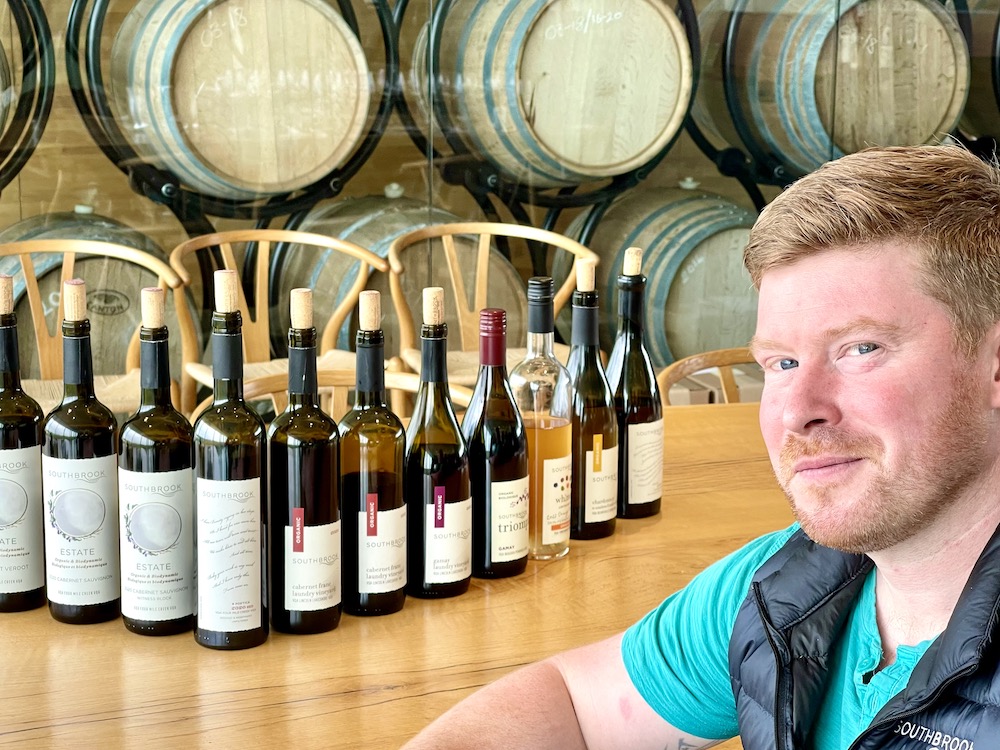
When the dust had cleared, a couple of tasters at the table had correctly picked the Poetica out of the crowd, alas, I did not. I did nail the Southbrook Cab Sauv and Malartic-Lagravière with two good guesses but know now that the point of this exercise was not to determine what each wine was, it was more that all six of them — four Bordeaux, and two Southbrook wines — were comfortable with each other at the same table.
With my scores landing between 92 and 94 points, there wasn’t a whole lot of difference in the wine quality across the board. The only differentiating qualities was the intensity of fruit, the finesse, the tannins, possibly the longevity, and maybe the length on the finish. The two Southbrook wines were not obviously identified as Niagara, and I suspect, those lines will only get blurrier as they age gracefully in your cellar.
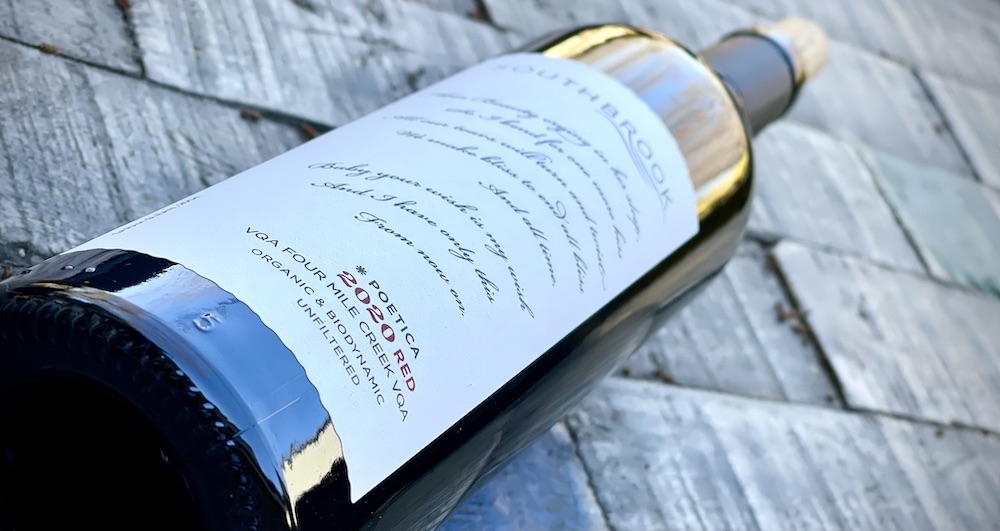
As Redelmeier noted at the Sunday tasting, “they’re all so similar. What I’m really pleased with is, I tasted the Poetica yesterday (Saturday) and today I had no idea which one it was.”
When tasting semi-blind, Redelmeier said, it “means that we knew which wines were being tasted, but not the order. Tasting this way eliminates bias. That meant that when I picked the Poetica Red as first on Saturday and the Estate Cabernet Sauvignon on Sunday it was truly because I thought that they were the best. The consensus in the room was that no one could pick out the Southbrook wines, which is what I have been trying to accomplish all along.”
Mission accomplished!
Here’s how I have previously reviewed both Southbrook wines (both available at the winery):
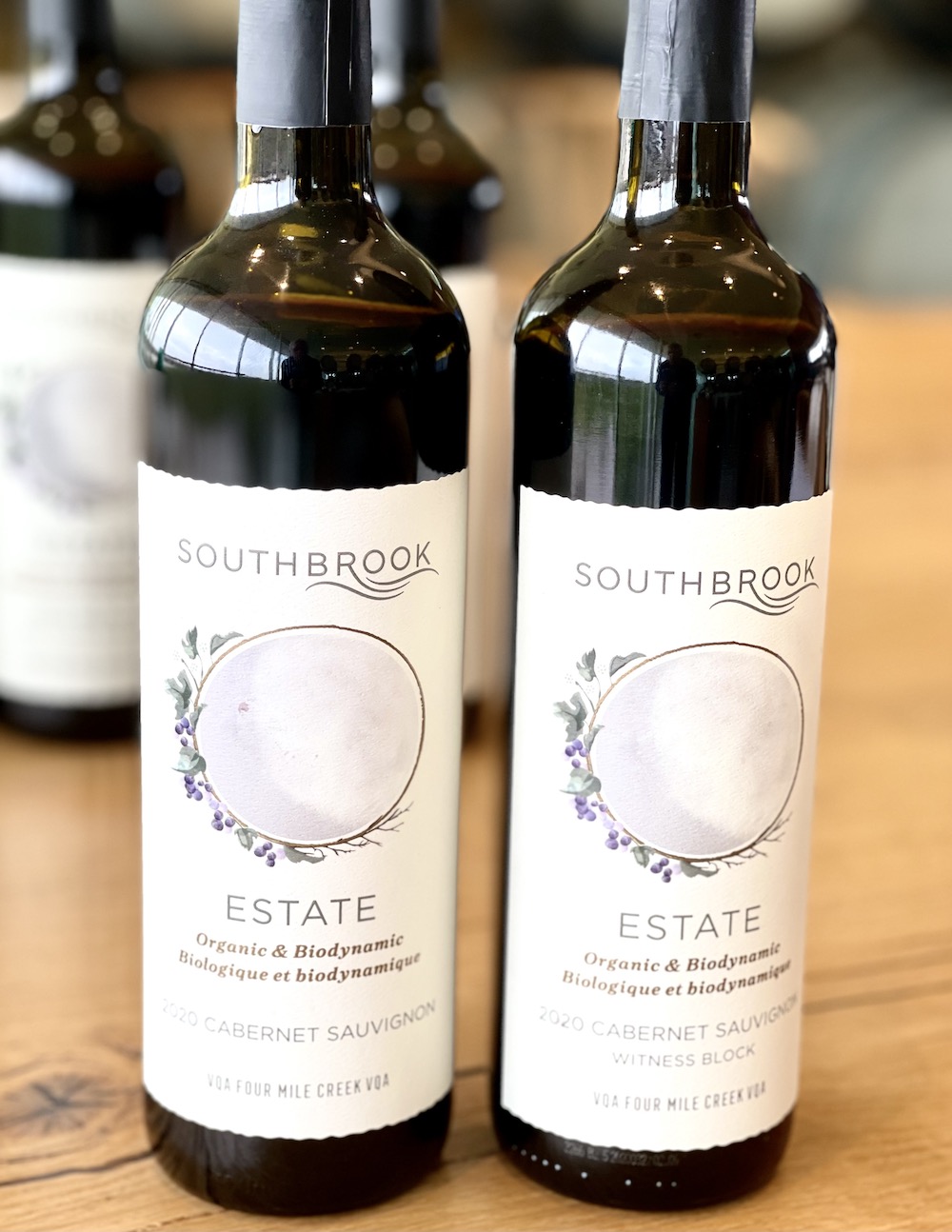
Southbrook Estate Cabernet Sauvignon 2020 ($48, 93 points) — The wine spends 18 months in French oak barrels (50% new oak). If any grape variety benefited the most from the hot 2020 vintage, it is Cab Sauvignon, especially in the warm Four Mile Creek sub-appellation. We will see some long-lived wines coming from this vintage, especially from the bolder reds. This is a delight on the nose with plump blackberries, black currants, cassis, dark cherries, dried tobacco, and baking spices. It’s built on a solid bed of tannins with thick and pronounced dark berries, kirsch, licorice, earthy accents, cedar, and lovely spices in a mouth-filling style that benefits from racy acidity on a long, long finish. Can cellar to 2030 or beyond.
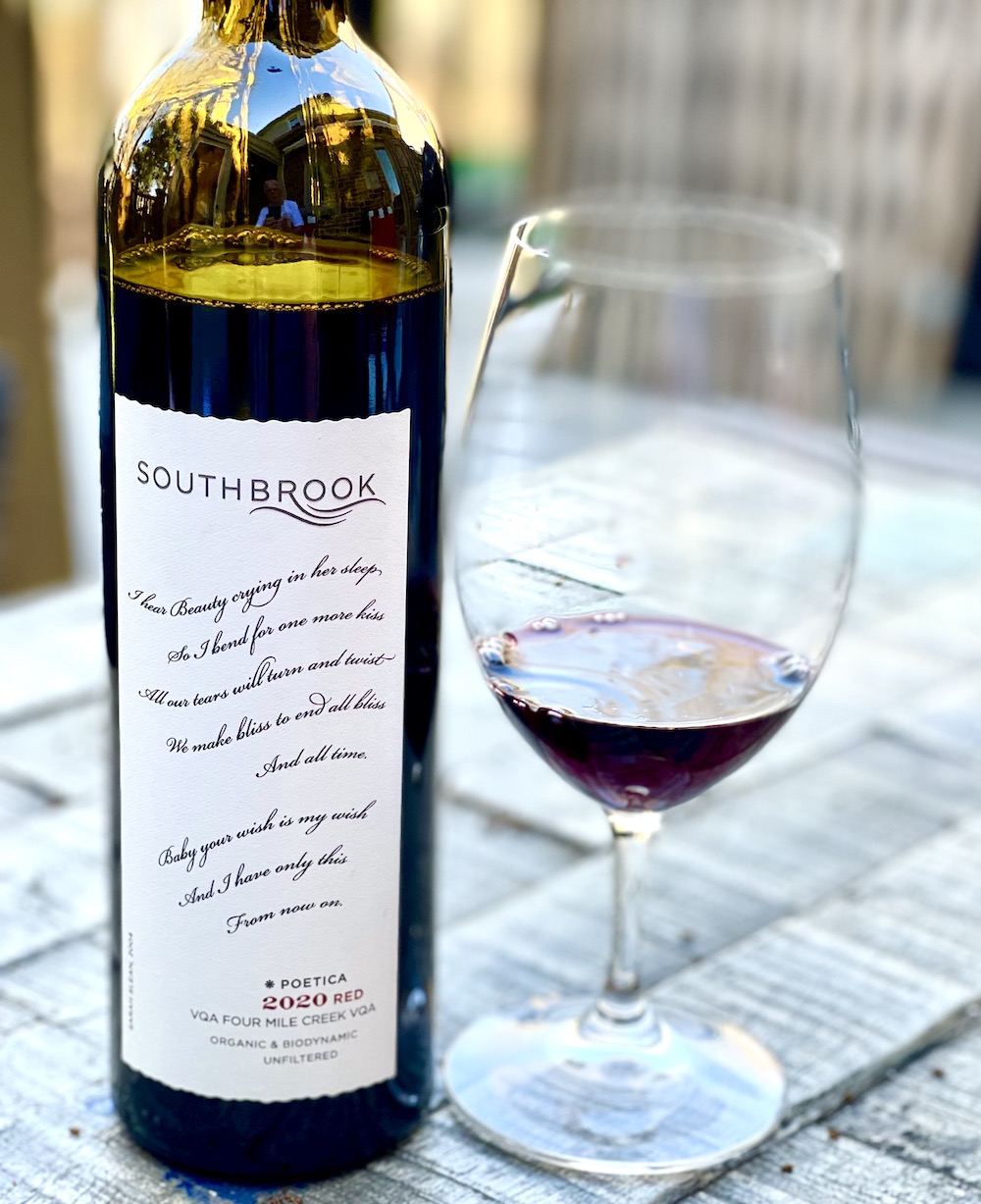
Southbrook Poetica Red 2020 ($70, 96 points) — Poetica wines are only made in the what the winemakers feel are the best vintages for the style of wine they want to present to consumers. There was no Poetica Red in 2017 or 2018, and winemaker Casey Hogan is still assessing the potential for 2021 while 2022 is a definite yes. The winemaking team, now led by Hogan (previously Ann Sperling), carefully chooses the best grapes from the estate’s biodynamic and organic vineyards, and then picks from the best barrels for the Poetica. The 2020 blend is 58.4% Cabernet Sauvignon, 29.5% Merlot, 6.9% Petit Verdot and the rest Cabernet Franc. Clusters were sorted and whole berries were fermented in micro-cuvee lots in open top new French oak barrels. Post-processing, the lots were returned to the barrels for aging. After 18 months, individual barrels were tasted, assessed, and blended. After pressing, the lots were returned to the barrels for 13 months of aging. The blended wine received an additional five months in oak barrels (30% new oak). I tasted this wine with Hogan at the winery un-decanted and then tasted it again 24 hours later and then 24 hours after that to get a more complete picture of where it is going. I can confidently tell you; it’s going to the moon! This is a stunner of a wine. It has an intoxicating nose of brambly raspberries, black currants, dark cherries, jammy cassis, violets, blackberries, sweet cedar, and an elegant array of spices. It’s mouth-filling on the palate with a generous array of ripe red and dark berries, grippy tannic structure, subtle savoury notes, gorgeous fine oak spices that all comes at you in layer after layer. It has remarkable balance for such a young wine, and a vibrant, finessed finish that lasts for minutes. It shows incredible restraint and elegance for such a blockbuster of a wine. You need this in your cellar, but find a cool, dark place and forget a bottle or two for 20+ years. Your children will thank you later.
The poetry on the bottle is from Sarah Slean’s Your Wish Is My Wish.
I hear beauty crying in her sleep
So I bent for one more kiss
And her tears will turn and twist
We make bliss to end all bliss
And all time
Two new bubbles from Niagara
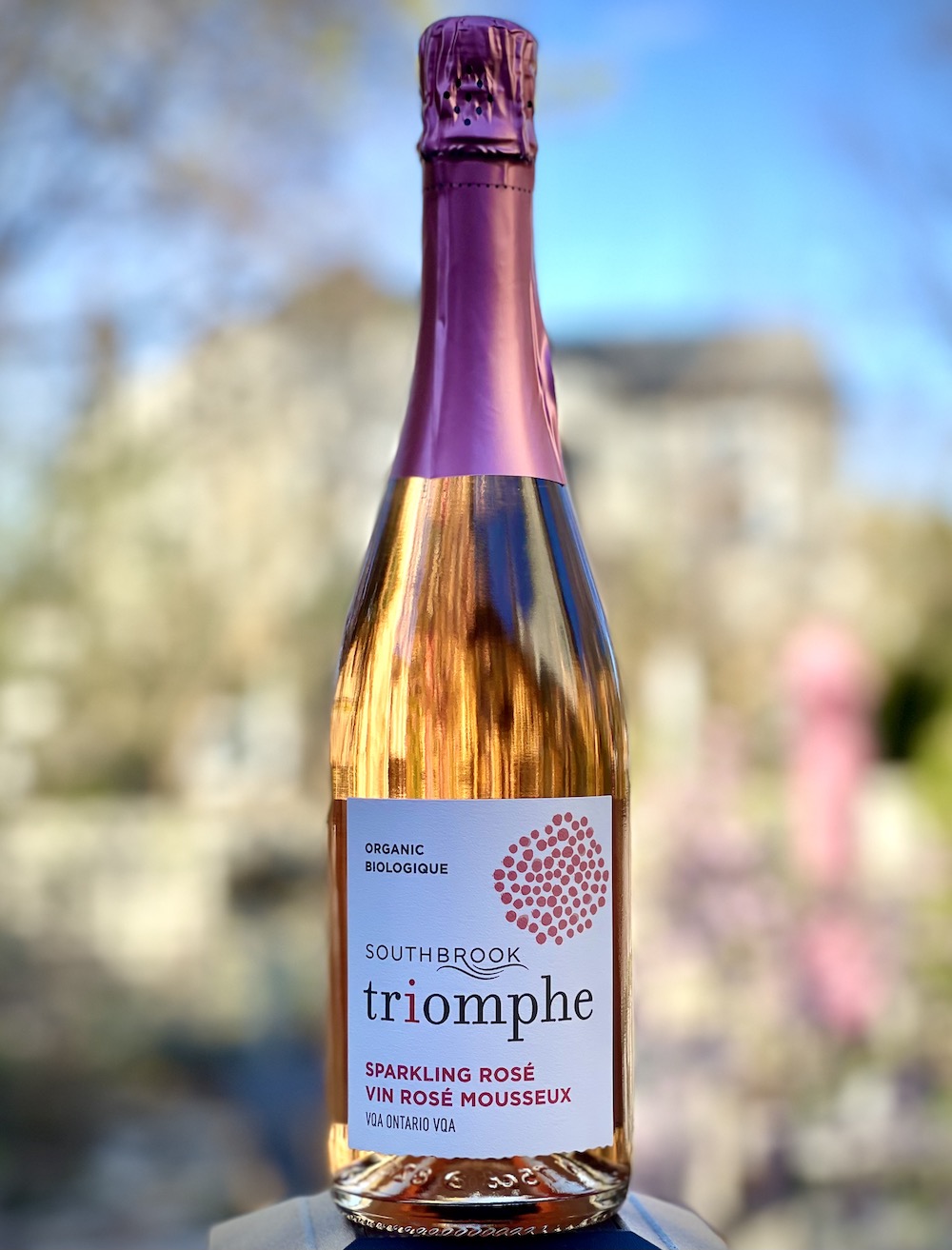
Southbrook Triomphe Sparkling Rosé NV ($30, 90 points) — This organic sparkling wine was made in the charmat method. Small amounts of Merlot and Pinot Noir were blended into the Chardonnay Musque to achieve the pale salmon colour in the glass. The nose shows fresh raspberries, red currants, summer cherries, herbs, and an elegant bead in the glass. The palate reveals an enticing basket of fresh-picked red berries, a touch of sweetness, citrus zest and persistent effervescent with mouth-watering acidity.
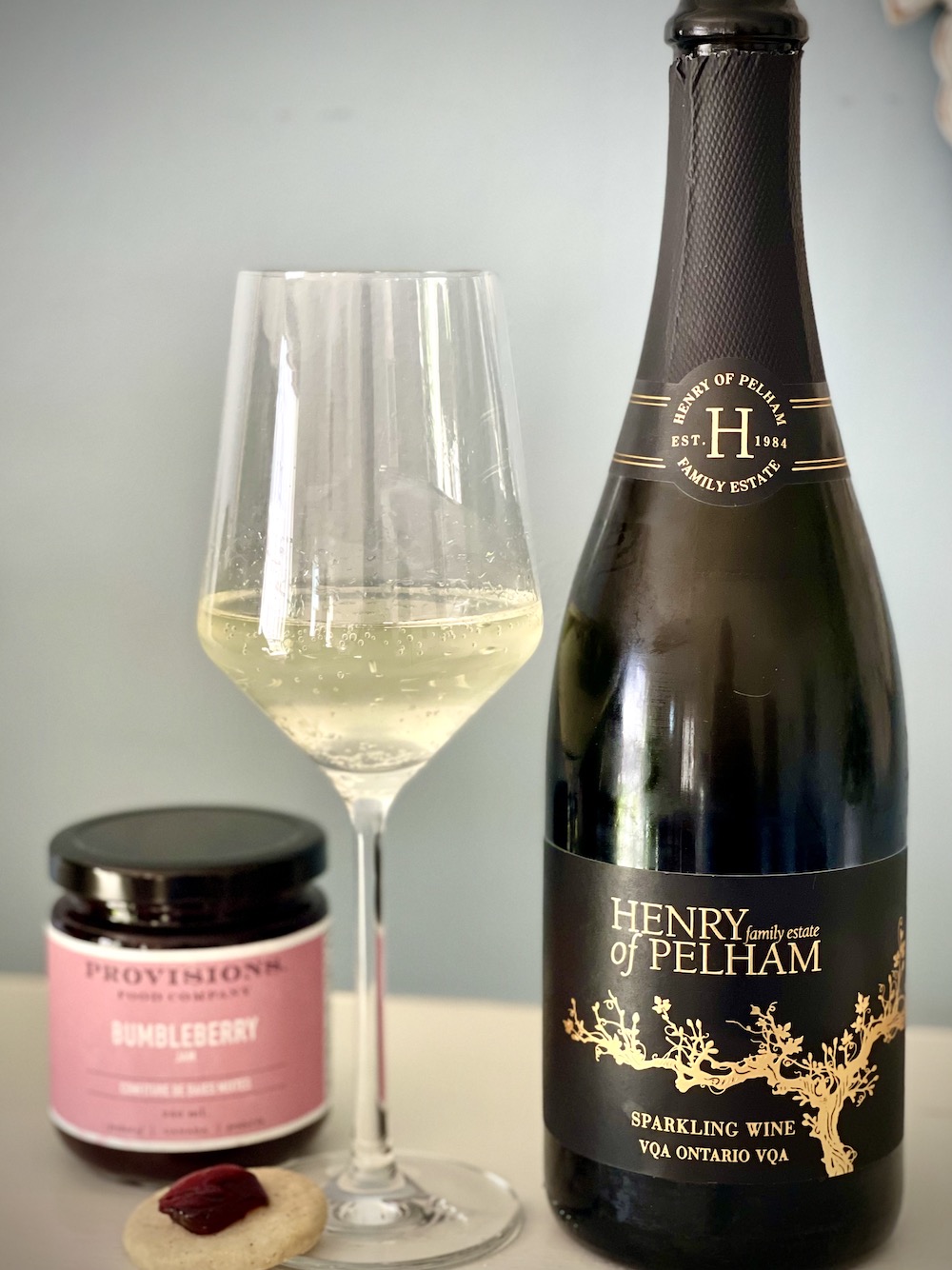
Henry of Pelham Sparkling Wine NV ($18, 89 points) — This charmat style of sparkling wine is the first new wine from Henry of Pelham since the Bin 106 Lost Boys Baco Noir launched in 2018. It’s a blend of 70% Riesling, 17% Chardonnay, and 13% Gewurztraminer that gets a minimum of 30 days lees aging. It’s an affordable sparkler with a fresh and fruity nose of peaches, green apples, lemon zest and a soft bubble in the glass. It’s zesty and loaded with bright orchard fruits on the palate with lemon, a touch of brioche and flint, perky bubbles, and juicy, mouth-watering acidity on the finish. I paired this with Provisions Food Company’s Vanilla Bean Shortbread with a dollop of Bumbleberry Jam. Delicious!
Niagara wines (and a Chianti) coming
to Vintages stores on Saturday
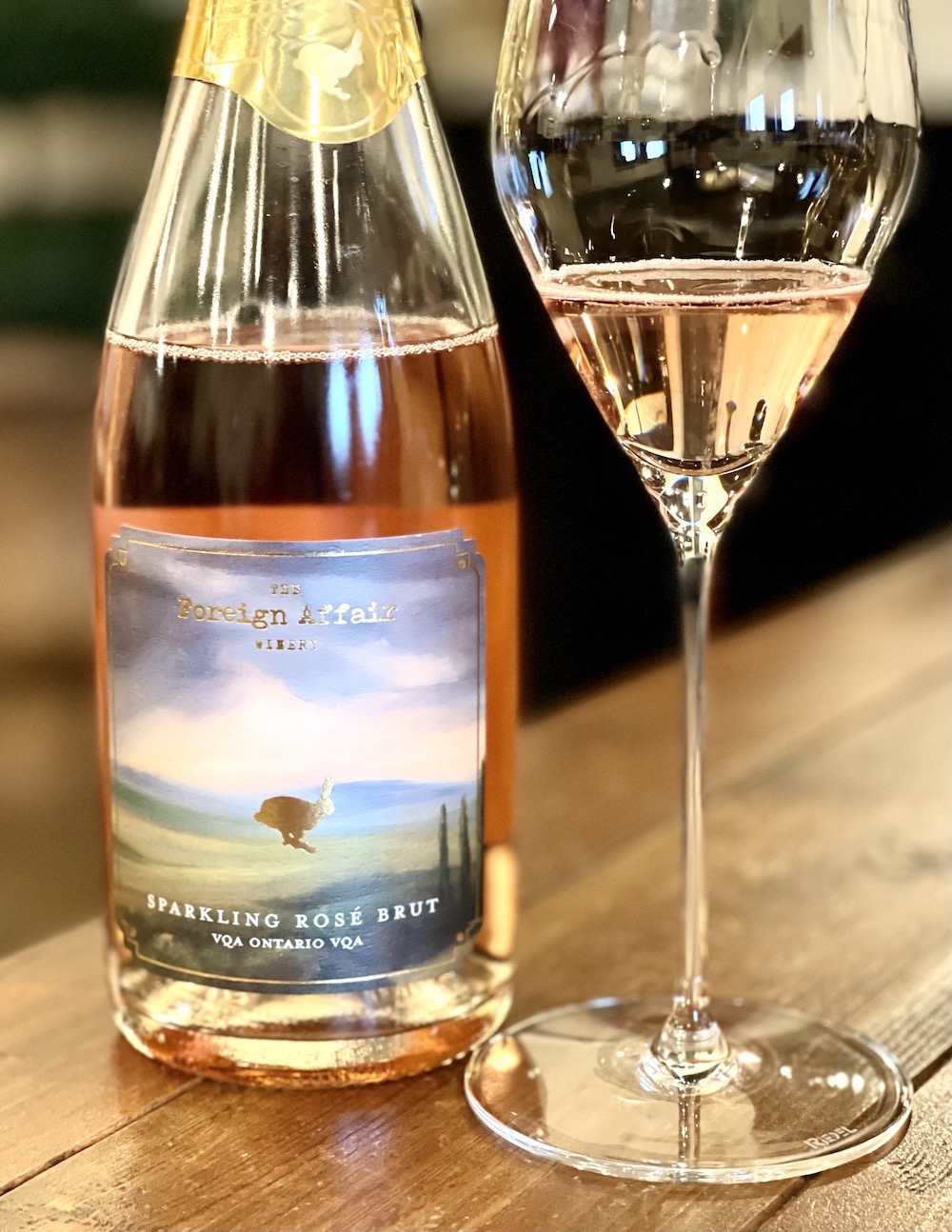
The Foreign Affair Brut Rosé Sparkling NV ($25, 89 points) — A smartly priced charmat style blend of Riesling with a bit of Gamay and Malbec (mostly for colour). It’s bright and lively on the nose with persistent effervescence and plenty of citrus, apple, and red/dark berries. It’s flavourful and zesty on the palate with citrus, green apple, and berries. “This is just way more fun than serious sparkling,” said winemaker Rene Van Ede. “I have no problem crushing this bottle.”
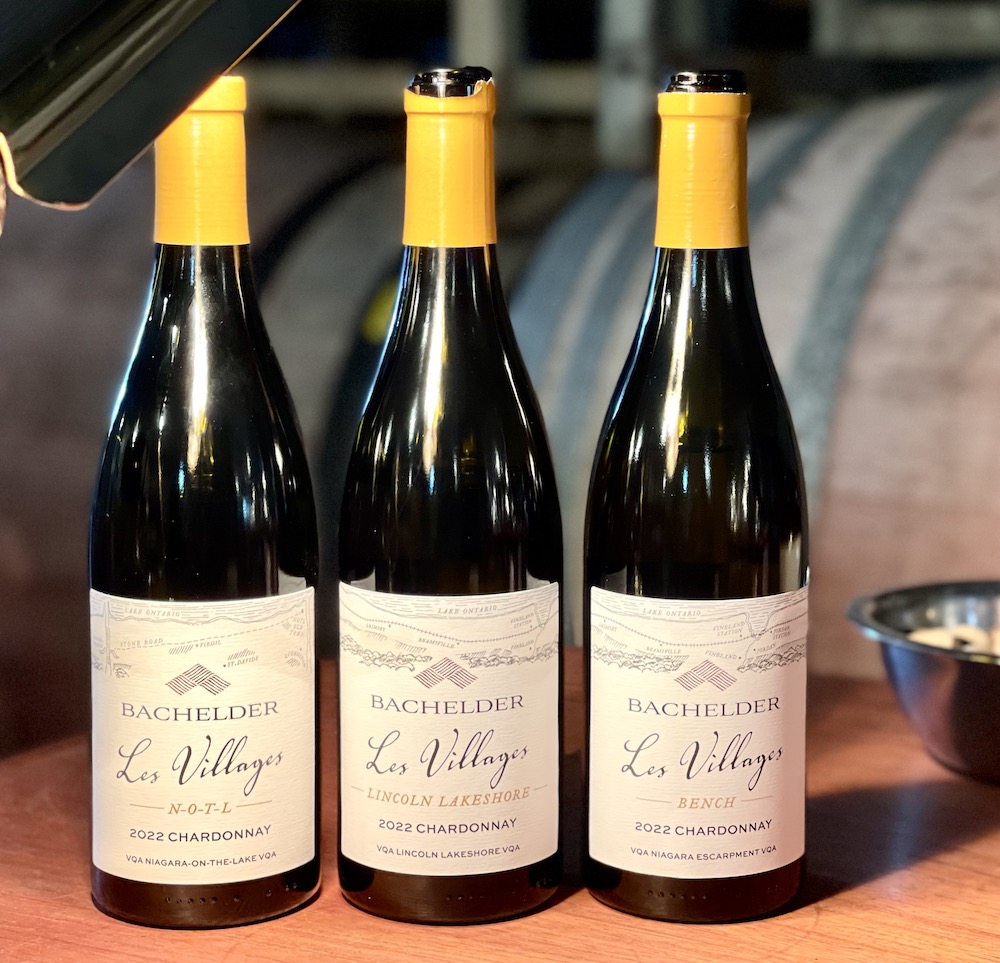
Bachelder Les Village Bench Chardonnay 2021 ($35, 93 points) — The Wismer and Saunders sourced fruit from the Bench is the most elegant of the three Chards in the Village trilogy. The nose is wispy, flinty, and laced with saline freshness follow by lemon zest, pear, apple skin and elegant spice notes. It’s such a mineral bomb on the palate with a complex array of stone fruits, bergamot, citrus zest, lemon cream and a lifted, long finish. A delight.
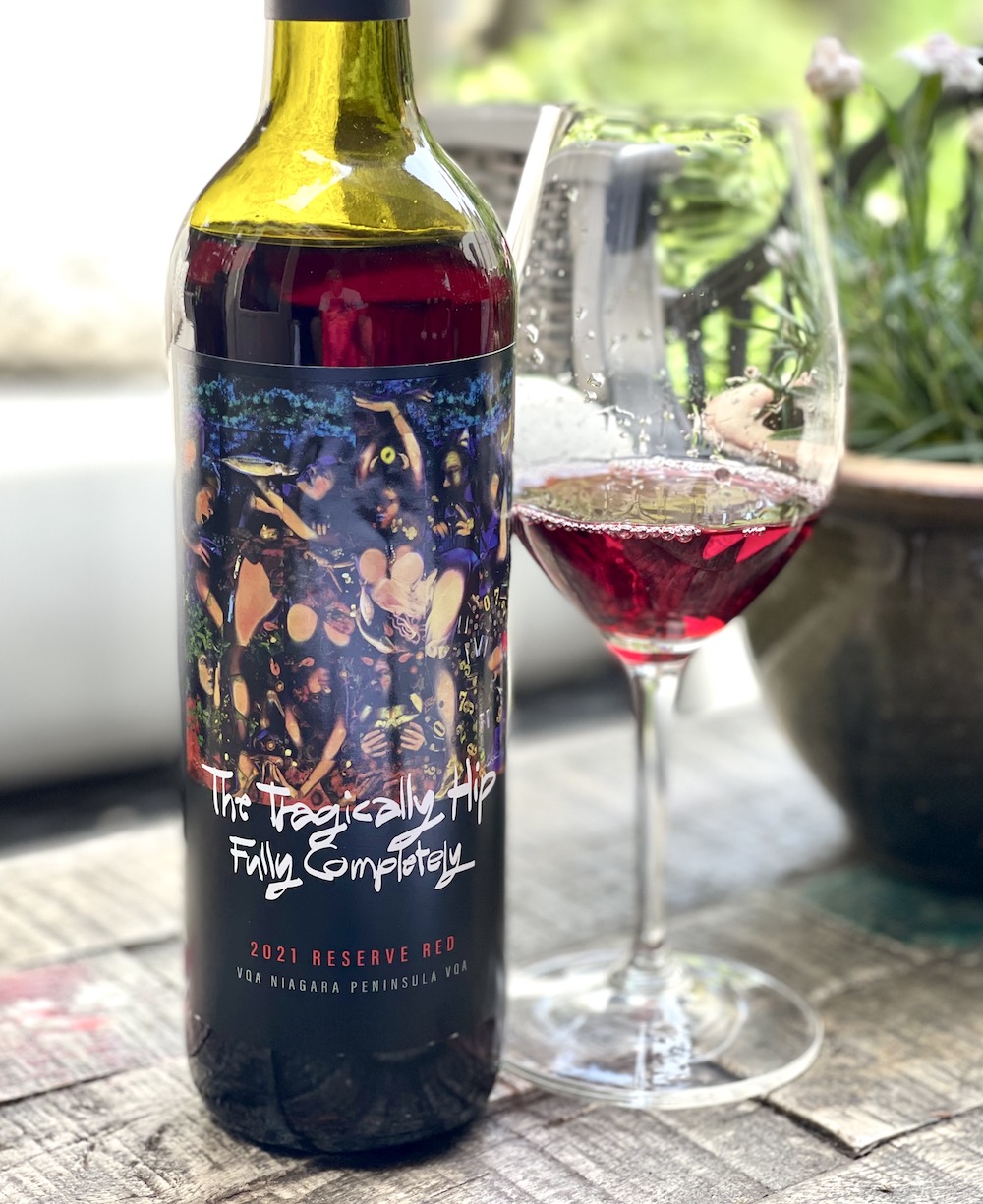
The Tragically Hip Fully Completely Reserve Red 2021 ($25, 90 points) — This is the third iteration of the reserve red in the Hip series originally created to commemorate the Canadian band’s announcement of the re-release of their legendary album Fully Completely and 2015 North American Tour. The wine was co-created by band members Gord Downie, Paul Langlois, Rob Baker, Gord Sinclair, and Johnny Fay in conjunction with former Stoney Ridge head winemaker Jeff Hundertmark. It’s a Bordeaux-variety blend of 48% Merlot, 27% Cabernet Franc and 25% Cabernet Sauvignon from grapes harvested from a single vineyard in the western end of the Niagara Peninsula. It shows a light shade of red but the juicy nose of dark berries, black raspberries, brambly/earthy notes, cedar plank, and oak spices jump from the glass. The red fruits and dark plums on the palate are well integrated with interesting anise/licorice and smoky/toasty oak spice notes adding complexity and interest. It finishes with vibrancy and length. Pair with your favourite Spotify Hip playlist and enjoy!
A terrific Chianti at an attractive price
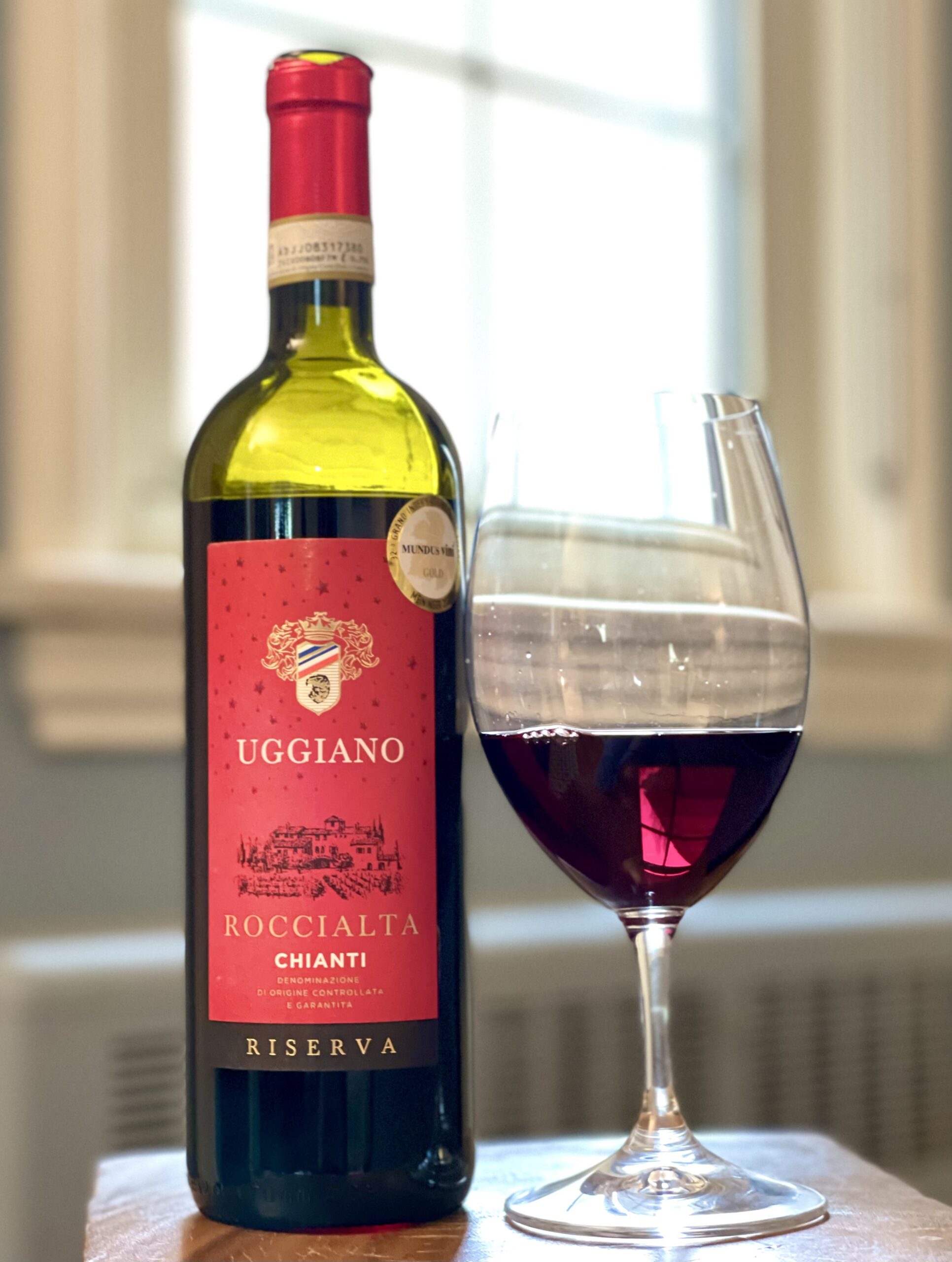
Uggiano Roccialta Chianti Riserva DOCG 2020 ($18, Vintages 92 points) — The blend for this distinctly, quintessentially Chianti Riserva is 90% Sangiovese, and 10% Canaiolo. After 10-15 days of pump overs, the wine is racked to large 30-60 hL oak casks for six months, with further refinement for at least 3 months in bottle. It has an enticing nose of savoury, brambly red berries, plums, spice box, a touch of earth, spice and youthful exuberance. It’s juicy on the palate with a meaty profile of dark cherries, brambly black raspberries, anise, plums, ripe, refined tannins, toasted vanilla bean and spice with a lifted and bright finish. All that for $18? A no brainer. Can cellar to 2029, but attractive now.
Also released but not reviewed by Wines in Niagara:
• Queenston Mile Pét-Nat Sparkling Viognier 2021 ($40)
• Cave Spring CSV Estate Grown Riesling 2022 ($35)
• Palatine Hills Wild Barrel Aged Riesling 2021 ($20)
• Le Clos Jordanne Village Pinot Noir 2021 ($30)
• Malivoire Vivant Rosé 2023 ($20)
• Peninsula Ridge Beal Vineyard Cabernet Rosé 2023 ($17)








Comment here